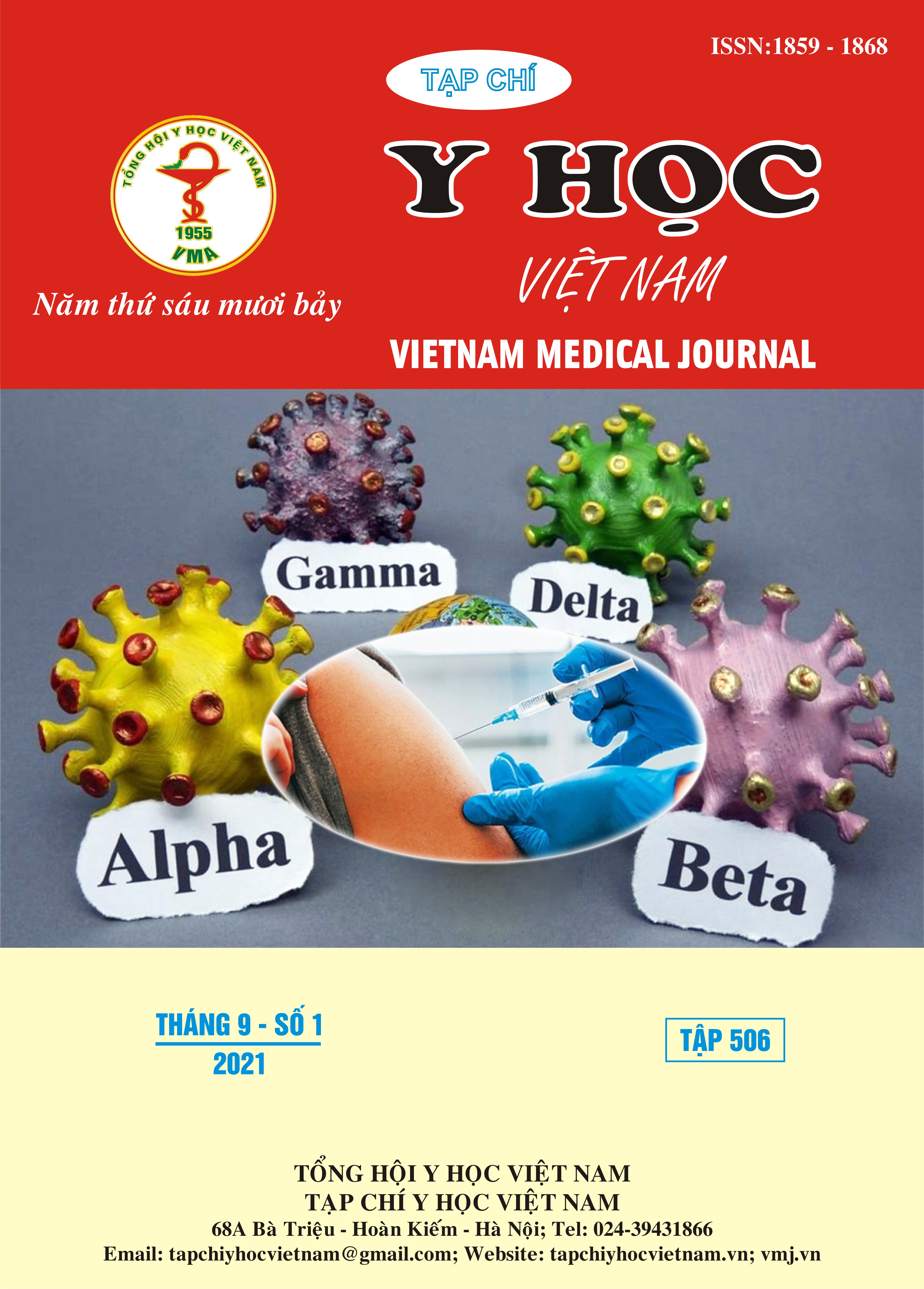SEPARATION OF THE STANDARD SAMPLE LIPID LAYER IN A HIGH CONCENTRATION SALT SOLUTION BY THIN-LAYER-CHROMATOGRAPHY AND SOLID-PHASE-EXTRACTION
Main Article Content
Abstract
The published TLC, SPE processes can well separate lipid subclasses from biological samples in nature such as (lipids in food, lipids in the human serum...). We have applied lipid analysis in solutions with high alkaline salt concentration (DDM: biological tissue preservation solution), by these TLC, SPE processes; however, the SPE procedure according to Kaluzny and Agren was not repeatable for lipid samples extracted from DDM, the results were not obtained as announced by the author; The obtained TLC results are in agreement with a number of widely accepted publications, but it is difficult to identify cholesterol with DG in the mixed sample analysis results. This is clearly a limitation if the target ingredients are DG and cholesterol. Through the survey, we improved TLC (Institute 69) one step with solvent mixture B (C6-DEE-methanol-acetic acid; 90:20:3:2) due to its simplicity and good separation of standard lipid layers. single as well as mixed. In case it is necessary to separate more MG components, DG can go one step further with a mixture containing polar solvents, we have obtained improved results when expanding one step further with C6-DEE- acetone (60:40:5) to 12 cm. Objective: To evaluate the efficiency of separating lipid components in alkaline salt solution by solid-phase extraction and thin layer chromatography, to select and optimize the application process of lipid analysis in saline solution. Subjects and methods: Conducted on 6 standard lipid samples including FFA (C12:0 - C22:0; Sigma); glycerol acyl with 1 to 3 fatty acids (C14:0 - C18:0) (Sigma); a mixture of 37 FAMEs (Supelco), a mixture of PL phospholipids including PC and PE; 6 standard lipid samples, 6 adipose tissue lipid samples preserved in saline solution (DDM) were repeated n=6 for each sample.Revised TLC Process at Institute 69. Experimental descriptive research method. Results: With the method of Institute 69 for stable results, high repeatability and good separation of lipid layers: Phospholipid; monoglycerides; diglycerides; cholesterol; free fatty acids; triglycerides; cholesterol esther has Rf respectively: 0; (0.0 - 0.03); (0.11 - 0.28); (0.12 - 0.20); (0.33 - 0.52); (0.66 - 0.75); (0.80 - 0.90). The lipid layers from the TLC plate were also obtained quite simply for further analysis. Allows good application for separation of lipids in DDM at Institute 69. Conclusion: Application of the modified TLC method at Institute 69 can effectively separate the soluble lipid layers in DDM, which is an important step in sample preparation for intensive lipid analyzes by gas chromatography, high-performance liquid chromatography
Article Details
Keywords
thin layer chromatography (TLC), solid -phase extraction (SPE), lipid, saline solution (DDM)
References
2. Nguyễn Hồng Minh (1995), Xác định lipid trong dung dịch ướp bảo quản bằng phương pháp sắc ký lớp mỏng, Đề tài nhánh thuộc đề tài độc lập cấp Nhà nước, mã số KYĐL - 96 - 01.
3. Agren J. J., Julkunen A., Penttila I. (1992), Rapid separation of serum lipids for fatty acid analysis by a single aminopropyl column. J. Lipid Res. 33(12): 1871 - 6.
4. Kaluzny M. A., Duncan L. A., MerrittM. V., Epps D. E. (1985), Rapid separation of lipid classes in high yield and purity using bonded phase columns. Journal of lipid research, 26(1), 135-140.
5. Kupke I. R. And Zeugner S. (1978), Quantitative high-performance thin-layer chromatography of lipids in plasma and liver homogenates after direct application of 0.5-μl samples to the silica-gel layer. Journal of Chromatography B: Biomedical Sciences and Applications, 146(2), 261-271.
6. Ruiz J. I., Ochoa B. (1997), Quantification in the subnanomolar range of phospholipids and neutral lipids by monodimensional thin-layer chromatography and image analysis. J. Lipid Res., 38(7): 1482 - 9.
7. White T., Bursten S., Federighi D., Lewis R. A. (1998), Nudelman, E.High-resolution separation and quantification of neutral lipid andphospholipid species in mammalian cells and sera by multi-onedimensionalthin-layer chromatography. Anal. Biochem.258: 109 – 117.


